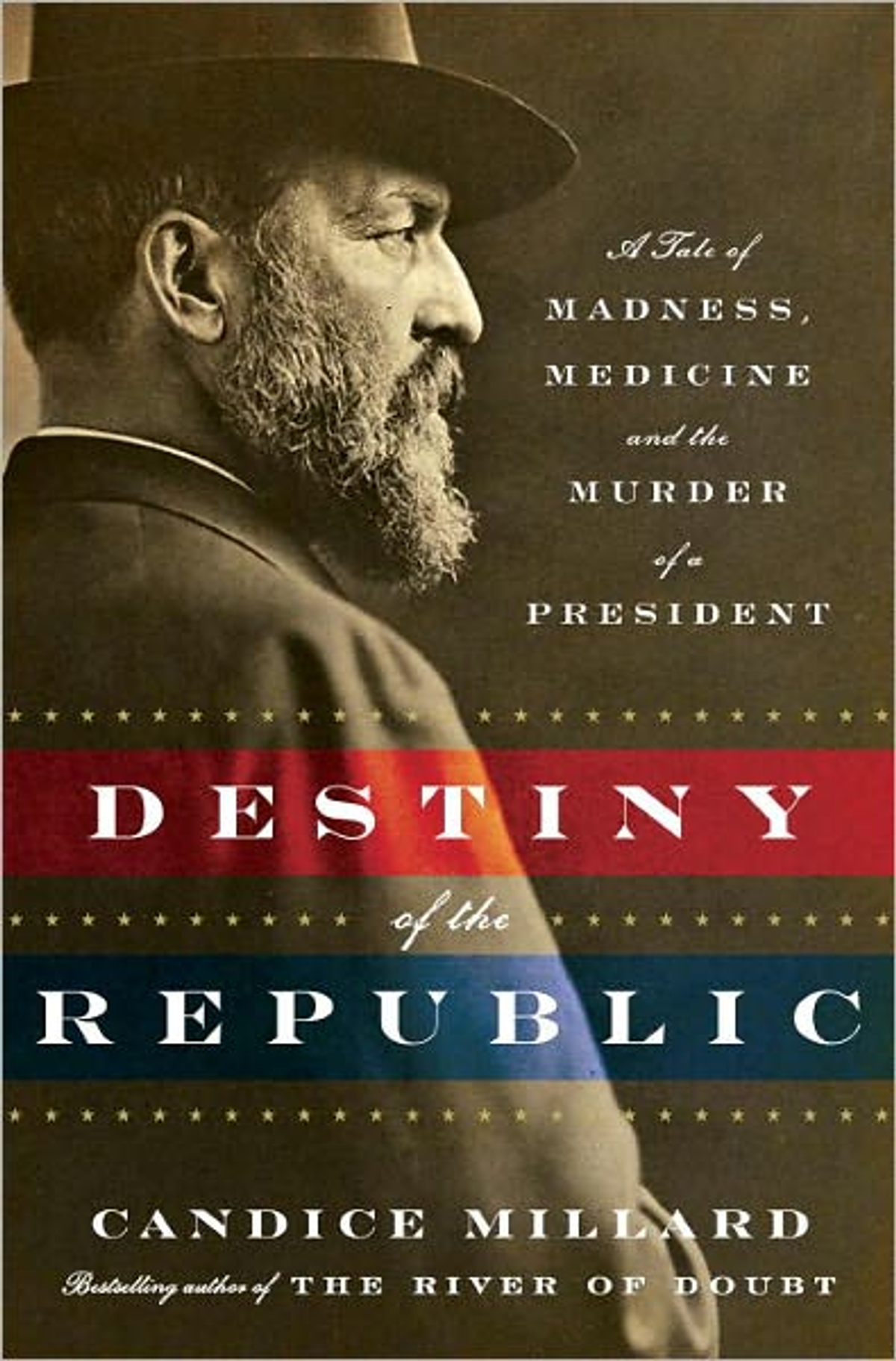In November 1881, Charles Guiteau, a charlatan suffering from mental illness, stood trial for the assassination of President James Garfield. As part of his erratic defense, Guiteau argued that he should not be charged with murder, because the bullets he fired from his ivory-handled revolver didn't kill the president. Instead, Garfield died as a result of the care he received from his doctors. "I deny the killing, if your honor please," he said. "We admit the shooting."
 Whether they were prompted by insanity or simple desperation in the face of his looming, almost inevitable execution, there was element of truth in Guiteau's ravings. In "Destiny of the Republic: A Tale of Madness, Medicine, and the Murder of a President," Candice Millard reconstructs the events leading up to and following Garfield's assassination. The murder serves as a lens through which to examine Garfield's life, Guiteau's peripatetic existence, the fortunes of the Republican Party, the political spoils system, the role of scientific invention, and the state of the American medical profession. By keeping a tight hold on her narrative strands, Millard crafts a popular history rich with detail and emotion.
Whether they were prompted by insanity or simple desperation in the face of his looming, almost inevitable execution, there was element of truth in Guiteau's ravings. In "Destiny of the Republic: A Tale of Madness, Medicine, and the Murder of a President," Candice Millard reconstructs the events leading up to and following Garfield's assassination. The murder serves as a lens through which to examine Garfield's life, Guiteau's peripatetic existence, the fortunes of the Republican Party, the political spoils system, the role of scientific invention, and the state of the American medical profession. By keeping a tight hold on her narrative strands, Millard crafts a popular history rich with detail and emotion.
One of the pleasures of the book is the chance to learn more about Garfield, who appears as a fully realized historical figure instead of a trivia answer. A child of a poor family, he worked as a canal driver before attending college at Ohio's Western Reserve Eclectic Institute. During the Civil War, Garfield's leadership of Ohio's 42nd Regiment yielded a bloody victory over Confederate forces at the Battle of Middle Creek, securing Kentucky's allegiance to the Union. Elected to Congress as a Republican, Garfield served nine terms in the House, developing a reputation for oratory and a willingness to dig into financial issues. Drafted to stand for president against his wishes, Garfield entered the White House in 1881 with more than a bit of reluctance.
Unlike Garfield, Guiteau never found his calling. An odd little man, he was by turns a lawyer, a swindler, and a traveling evangelist whose constant movement from city to city made it possible for him to escape the consequences of unpaid bills and delusional behavior. As his fortunes declined, so did his mental state. Having delivered a short speech at a "small gathering" in New York endorsing Garfield's candidacy, Guiteau came to believe that he had orchestrated Garfield's victory. Guiteau spent weeks loitering in the waiting rooms of the White House and State Department, intent on securing an ambassadorship to Vienna or Paris. When the appointment didn't materialize, Guiteau was subject to a divine revelation that came "like a flash" while he lay in bed: God commanded him to kill the ungrateful president.
His mind quickly taken over by this obsession, Guiteau borrowed some money, bought a pistol at a sporting goods store, and commenced stalking the president, an activity that Millard shows to have been shockingly easy, even in a city that had witnessed Lincoln's shooting less than two decades prior. After some false starts, the assassin waited for Garfield in a Washington, D.C., train station on July 2, 1881, and shot him twice in the back. Seized by the crowd, Guiteau gave himself up to the police and asked them to deliver a letter to Gen. Sherman. He expected in short order to be proclaimed a hero.
Millard devotes most of the second half of the book to a revealing chronicle of Garfield's treatment after the attack, and its consequences. American medicine in the 1880s had not yet embraced Joseph Lister's ideas about germs and their role in promoting infection -- indeed, many were mounting a furious counterattack against what they considered a nonsensical foreign innovation. Within minutes of Garfield being shot, dirty fingers were inserted into the wounds to feel for the bullets. Millard shows how contemporary ideas about patient care -- diet, pain management, the cause of infections, wound care and sterilization -- led to Garfield's death two and a half months later. An invention by Alexander Graham Bell, which could detect the presence of metal, might have been able to locate where one of the bullets had lodged, but the doctor overseeing Garfield's care restricted its use out of concern for his own ego. The once-robust Garfield would lose 80 pounds as his body became a collection of pus-filled abscesses brought on by septic poisoning.
Millard's sympathetic portrayal of Garfield leaves the reader wondering what might have been had he lived. What kind of president would the bookish man from Ohio have turned out to be? The answers to these counterfactuals are outside the purview of Millard's book, but their seeming inevitability attests to her ability to bring to life the man at the center of her story, and his brief entry into the annals of presidential history.



Shares